Dublin
Attractions in Dublin
ATTRACTIONS IN DUBLIN IRELAND QUICK LINKS
Christ Church Cathedral | The Custom House | Dublin Castle | The Four Courts | The G.P.O | Guinness Storehouse | National Gallery of Ireland | National Museum of Ireland Archaeology | National Wax Museum | Saint Patricks Cathedral | Saint Stephens Green | Temple Bar | Trinity College Dublin and The Book of Kells
ATTRACTIONS IN DUBLIN IRELAND QUICK LINKS
Christ Church Cathedral
he original construction on the site of Christ Church in Dublin Ireland was that of a wooden Viking cathedral built in 1038. The Cathedral we see today was built from 1234 -1240 and is the Cathedral for the Church of Ireland for the archdiocese of Dublin and Glendalough.
The Custom House
Located on the North side of the River Liffey in Dublin Ireland, The Custom House is one of Dublin’s most impressive buildings and a visit to the Custom House should be on any what to do in Dublin list while staying in the capital. A classic Georgian building constructed in the latter part of the 18th century The Custom House was designed by British architect James Gandon. Gandon’s design is plentiful in fine architectural detail and was planned so details are viewed on all sides. 14 carved head keystones found on entrances and archers were sculpted by Dubliner Edward Smyth and represent the main rivers of Ireland and the Atlantic.
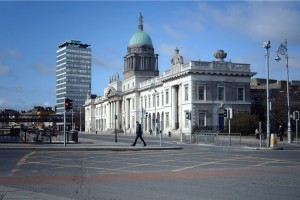
Dublin Castle
Situated in the Southwest of the city Dublin Castle was for centuries the centre of English rule in Ireland, that is until 1922 when it was transferred to the Irish Free State. Built by King John with construction beginning in 1204, Dublin Castle despite being the base of English rule in Ireland the castle never had to defend a significant attack.
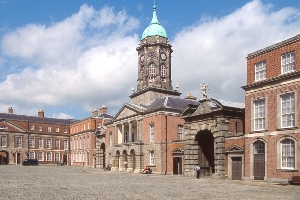
The Four Courts
Designed by British architect James Gandon in the late 18th century The Four Courts in Dublin Ireland are the location of Ireland’s Supreme Court and High Court. The Four Courts were originally constructed as a storage building for collections of historical records but the interior and the invaluable compilation of historical documents were seriously damaged by fire in 1922 during the Irish Civil War. The building was restored to the original design within 10 years but the loss of the records is the reason why it can be difficult to trace ancestors in Dublin Ireland before the war.
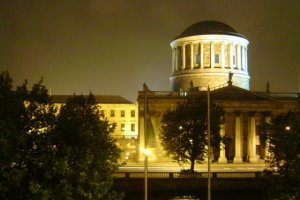
The G.P.O.
Found on O’Connell Street in Dublin City The G.P.O. (The General Post Office) is one of the few remaining remarkable Georgian buildings in the city and is one of the top attractions in Dublin. Built between 1815 & 1818 The G.P.O. is a dominant historical symbol in Ireland’s struggle for independence having been one of the buildings occupied by Irish Volunteers during the 1916 Rising. Today The G.P.O. in Dublin Ireland is still functioning as a post office and its historical significance is recognised by a plaque of “The Proclamation of the Irish Republic” and a series of paintings inside which pay tribute to the 1916 Rising.
Guinness Storehouse
Characterised by its opaque black colour and smooth creamy head Guinness, first made over 200 years ago, is enjoyed worldwide today. When considering attractions in Dublin , a visit to home of Guinness at St James’s Gate Brewery is a unique experience and highly recommended. During the tour of one of the Guinness Storehouse, one of the top attractions in Dublin, you will be taken through the brewing process as it happens and the tour ends with a Guinness tasting and a spectacular view of Dublin City in the rooftop Gravity Bar.
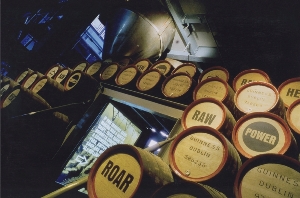
National Gallery of Ireland
Celebrating its 150th Anniversary in 2014 the National Gallery of Ireland in Dublin Ireland first opened its doors to the public in January 1864. Located on Merrion Square West the National Gallery is home to the most comprehensive collection of works by Irish artists along with masterpieces by international greats such as Picasso, Monet, Rembrandt and Van Gogh. The Gallery is among must see attractions in Dublin City.
National Museum of Ireland Archaeology
National Museum of Ireland Archaeology is the store house and main show house for all archaeological items found in Ireland. The museum is located on Kildare Street in Dublin City and first opened its doors in 1890. Exhibitions on Prehistoric Ireland, Kingship and Sacrifice, Viking Ireland, Medieval Ireland and Ancient Egypt can all be found at the National Museum of Ireland Archaeology in Dublin Ireland.
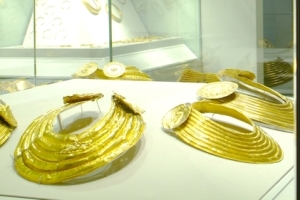
National Wax Museum
The National Wax Museum in Dublin Ireland largely centres on well know historical, political and cultural Irish figures along with displays on the historical and cultural development of the country. With displays over 4 floors and a dedicated Children’s Fantasy World the Museum is fun and educational for all the family, although keep in mind the Chamber of Horror is not for the very young, timid or faint of heart.
Saint Patrick's Cathedral
Saint Patrick's Cathedral in Dublin Ireland is the largest church in the country and one of the top attractions in Dublin. The original building was a less impressive wooden church until 1192 when it was rebuilt in stone. The Cathedral is built beside a scared well where it is believed St Patrick baptized converts.
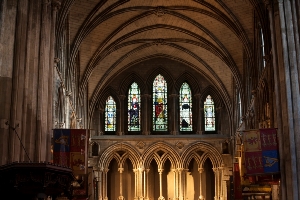
Saint Stephen's Green
St Stephen's Green in Dublin Ireland is an exquisite Georgian park on 22 acres of green in the middle of Dublin City. A much loved meeting place for people of the city the park is home to a fountain and a lake along with memorials to Irish historical figures.
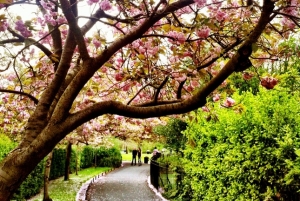
Temple Bar
Temple Bar is one of most exciting and lively spots in Dublin Ireland. Ideally located in the heart of Dublin City, Temple Bar has much to offer visitors and locals alike with several galleries, shops, and wide choice of bars and restaurants.
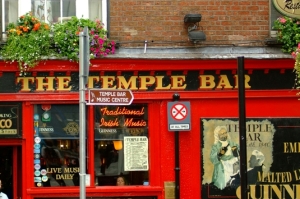
Trinity College Dublin and The Book of Kells
Founded in 1592 Trinity College was the first university in Ireland. While the college was intended to offer education to all of Ireland, for 200 years it only provided education to the protestant community. Even after 1793 when it was opened to Catholics the college attendees were still largely protestant until after 1970 when the catholic church lifted the ban on its students attending Trinity College in Dublin Ireland. The college campus is home to a unique collection of buildings and is also where the world famous Book of Kells can be found. The book is an ancient Celtic manuscript dating back to the 9th century, incredibly ornate and beautiful to look at The Book of Kells is one of the must see attractions in Dublin Ireland for all visitors to the capital city.
Dun Laoghaire
Only 20 minutes drive from Dublin City and with a harbour and 2 piers Dun Laoghaire is a busy port town in County Dublin and it is the docking point for ferry services from Britain. When considering what to do in Dublin visitors to Dun Laoghire town in the county can avail of a selection of guided walks know as the dun Laoghaire Way, and there is also a literary walk and archaeological trails. The town is also a great base for yachting.

Howth
Approximately 15 km (9 miles) from Dublin City and in the north of Dublin Bay is Howth a suburb of Dublin. Originally a small fishing village Howth is now a bustling suburb of Dublin and the area is frequented by anglers, birdwatchers and is also a popular location for sailing. From Howth you can also access Ireland’s Eye, this small island is home to a variety of birds and visitors can enjoy peaceful sandy beaches.
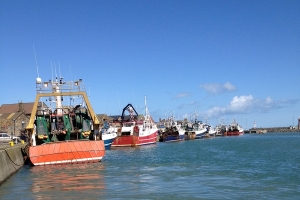
Malahide
Located approximately 15km (9 miles) from Dublin City is the picturesque village of Malahide. Old time shop fronts and cobbled streets make the village a charming place for stroll. This seaside town is home to Malahide Castle, construction on this large castle began in the 12th century and with its fairytale appearance is set in 250 acres of parkland surrounds the castle is well worth a visit.

